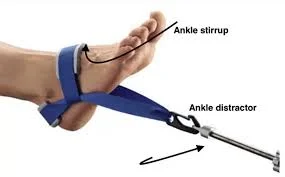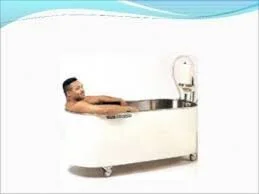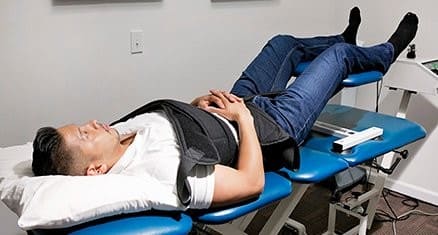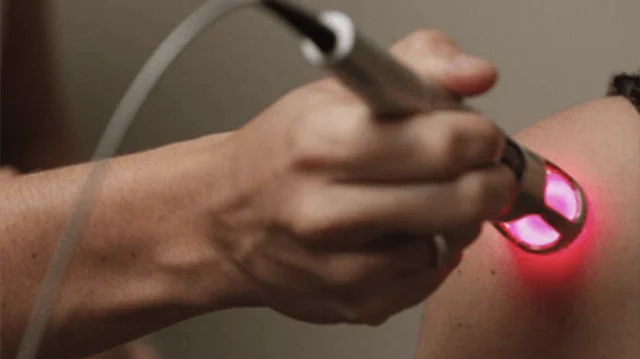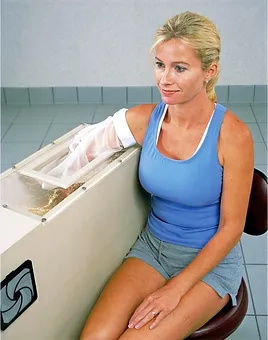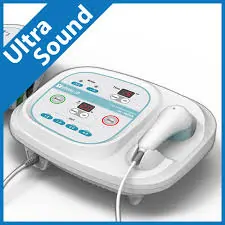Ankle Traction
What is Traction on the Ankle?
The term “ankle traction” describes a group of techniques used to stretch fractured bones while immobilizing them or to release pressure from the skeletal system while providing rest for the aim of healing. They are employed in the prevention or correction of aberrant leg deformities, as well as the treatment of fractures, dislocations, and long-lasting muscular spasms.
It is used to prevent or treat abnormalities as well as treat fractures, dislocations of the ankle joint, and spasms in the ankle muscles.
The traction technique realigns a bone or component by using weights.
A pulling force is applied to the ankle joint as part of the therapeutic procedure known as ankle traction. There are several ways to use this force, including:
The process of manually: A Physical Therapist possibly traction the ankle with their hands.
Mechanically: A constant, regulated force can be applied using traction devices like weights and pulleys.
Purposes of the traction :
- The traction serves to stabilize the injured area.
- Assist in getting the bone back in its natural place.
- Prior to surgery, temporarily lessen your pain.
- Get rid of or lessen tight joints, tendons, or ligaments as well as spasms in the muscles.
- aids in treating abnormalities as well.
- also alleviate decreased joint space, particularly in cases of hip and knee osteoarthritis.
Benefits of ankle traction:
- The purpose of ankle traction is to immobilize the sore and inflammatory joint.
- Additionally, it is advised for the treatment of soft tissue contractures.
- The process of realigning a bone or a portion with the aid of weights is called traction.
How much time will the patient need to be tractioned?
Traction may be necessary for a shorter duration for certain patients.
Some patients could need it for an extended period of time.
Your doctor or the physical therapist will determine the exact length of traction needed based on the patient’s condition.
How frequently should you practice traction?
Traction typically lasts 10 to 15 minutes per session, up to an hour. It may differ according to the illness and how severe it is. Physicians will advise How much and when you need traction.
You are able to attend multiple classes in a single day, though.
You should cease using traction and see your physical therapist once more if your pain gets worse.
Contraindications of Ankle traction:
You should refrain from using traction if you have any of the conditions listed below.
- Osteoporosis
- Rheumatoid arthritis
- pregnancy
- infection
The Barrel Sling Method for Traction of the Ankle:
Historically, the only options available for providing traction at the ankle joint have been costly, disposable devices or manual or percutaneous calcaneal traction. Here, we offer a low-cost, simple-to-use alternative technique that was once a useful favorite among seafarers moving cargo. The Barrel Sling Technique is a clever way to give traction at the ankle joint for treatments like minimally invasive plate osteosynthesis of tibial fractures and ankle arthroscopies. It uses an ordinary 6-inch sterile crepe bandage.
Methods:
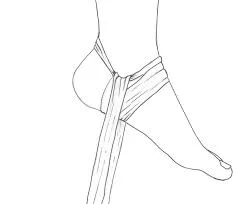
The tendo-Achilles is cradled in the center of the bandage while the patient is supine. The bandage’s arms are wrapped around the ankle and cross over onto the foot’s dorsum. After that, the throws are redirected to cross each other again by going around the sole of the foot. The two arms of the bandage are brought up close together to prepare them to go under the first toss.
Use alternative traction to tighten the structure or sling. Finally, the traction is now being applied in the opposite direction, away from the patient. Next, the traction axis is centrally located, and the traction is secured with several basic knots placed in between the two free ends of the bandage. The bandage is then wrapped around a strong bar, and 2–7 kg of weights are attached.
How can one apply ankle traction at home?
Benefit:
- Every size is accessible for it.
The following instruments are included in the kit:
- Ankle brace
- Water weight bag
- Ankle pulley bracket
- Traction cord
Method:
How can an ankle traction kit be assembled at home?
- At the foot of your bed is where the traction pulley bracket is mounted.
- the ankle traction brace now opens.
- Tighten the strap around the ankle after putting the ankle traction brace around it.
- The ankle traction brace’s ring should be connected to the ankle traction wire.
- Place the extension cord’s other end into the pulley.
- Secure the water-weight bag with the traction cord.
- The physiotherapist’s weight, age, and weight elevation are taken into account while calculating the water bag’s weight.
- It is demonstrated that the water bag weighs between five and six kg.
How is the ankle traction kit removed?
- Take out the water-weight bag.
- Pull the traction cord free.
- Remove the ankle brace after that.
Complications of Ankle traction :
- Virus Infection
- Sores under pressure
- injury to neural tissue
- asymmetrical bone or joint alignment
- Problem with the wire connection
- DVT, or deep vein thrombosis
DISCUSS
Thus far, there have been no reported cases of skin complications with this simple and safe traction technique. The technique’s clear benefits are that it is: (i) affordable (15 p); (ii) simple to use with easily accessible materials; and (iii) patient-noninvasive.
FAQs
Why would someone wear an ankle traction belt?
The Top Ankle Traction Holder provides the lower limb with grip and stability and helps to keep it safely and pleasantly in a resting posture by supporting the ankle with soft padding. Its main purpose is to provide support for traction on the lower leg, ankle, and lower spine.
What advantages does ankle traction offer?
After an accident or surgery, ankle traction is used to immobilize the joints to promote quick healing, stop additional damage, and lessen pain, swelling, and spasms.
What does an ankle immobilizer get used for?
Ankle braces offer awareness of the location of the ankle joint in space and act as external supports to restrict specific motions, such as plantar flexion/inversion, a movement at the ankle joint that points the foot downward away from the leg and rotates it inward.
When should I utilize traction?
This effect is reduced if the traction time is 8 to 10 minutes. Up to 20 minutes of treatment are frequently utilized for different diseases.
How is leg traction applied?
Any leg support straps should be positioned as instructed (e.g., 2 above the knee and 2 below). Apply longitudinally tension to the ankle for straightening and lengthen the shorter leg to the full length of the symmetrical leg.
Does traction help joints?
Traction causes the damaged joint’s bones to gently split, which relieves pain right away and allows healthy synovial fluid to return to the joint capsule, strengthening the cartilage and joint.
Can ankle weakness be strengthened?
The good news is that you can work on fortifying the ligaments and muscles that around your ankle. This will increase your mobility and stability while preventing injuries.
References:
- Chauhan, S. (2023a, July 20). Ankle Traction: Uses, Contraindications, How to take traction? Mobile Physiotherapy Clinic. https://mobilephysiotherapyclinic.in/ankle-traction-uses-purpose-contraindications-how-to-take-traction-at-home/#How_to_set_up_ankle_traction_kit_at_home
- Ramaraju, D., & Schenk, W. (2006). Technical Notes and Tips: Barrel Sling Technique for Ankle Traction. Annals of the Royal College of Surgeons of England, 88(6), 589. https://doi.org/10.1308/003588406x130714a

